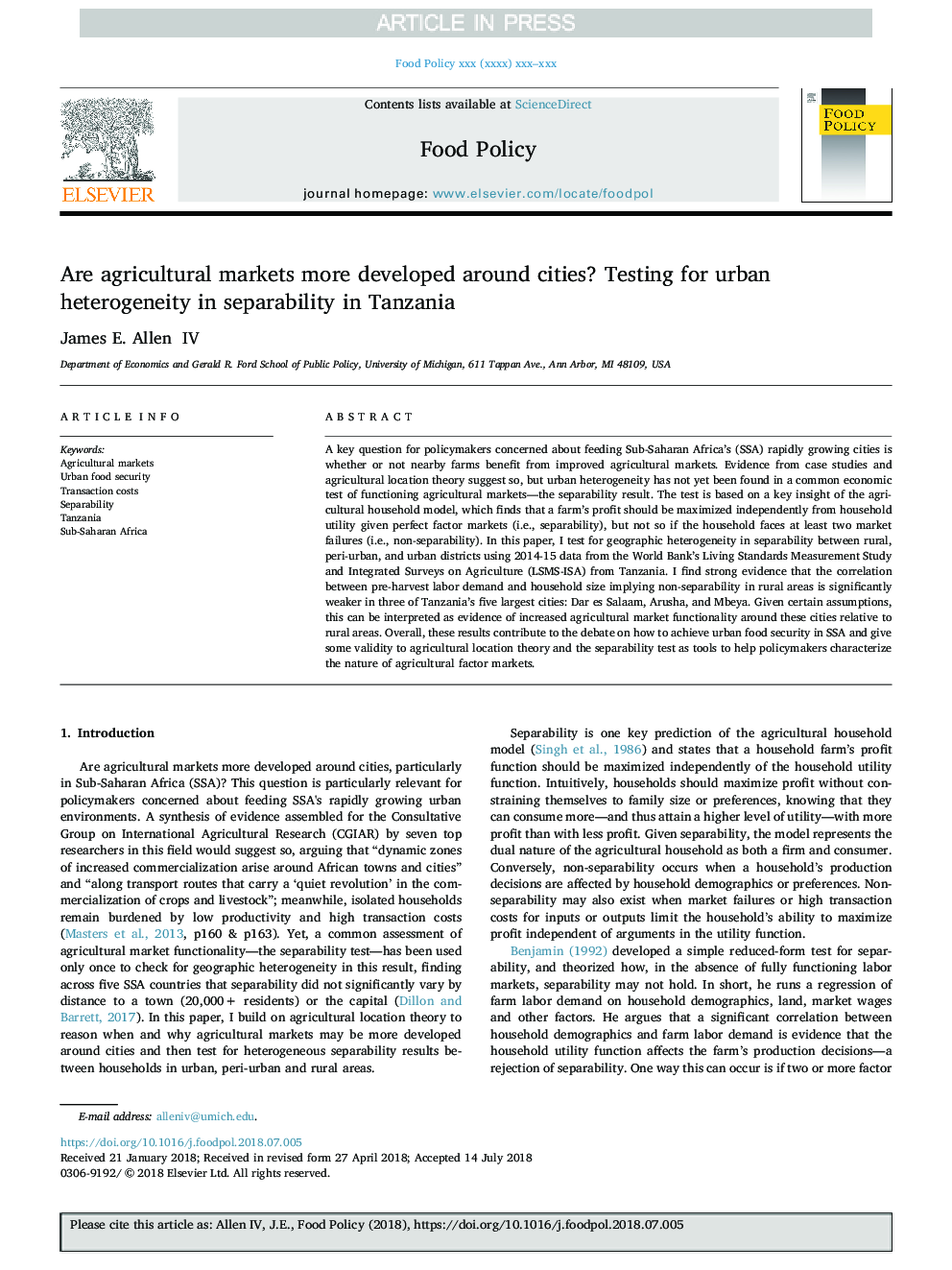| Article ID | Journal | Published Year | Pages | File Type |
|---|---|---|---|---|
| 8960827 | Food Policy | 2018 | 14 Pages |
Abstract
A key question for policymakers concerned about feeding Sub-Saharan Africa's (SSA) rapidly growing cities is whether or not nearby farms benefit from improved agricultural markets. Evidence from case studies and agricultural location theory suggest so, but urban heterogeneity has not yet been found in a common economic test of functioning agricultural markets-the separability result. The test is based on a key insight of the agricultural household model, which finds that a farm's profit should be maximized independently from household utility given perfect factor markets (i.e., separability), but not so if the household faces at least two market failures (i.e., non-separability). In this paper, I test for geographic heterogeneity in separability between rural, peri-urban, and urban districts using 2014-15 data from the World Bank's Living Standards Measurement Study and Integrated Surveys on Agriculture (LSMS-ISA) from Tanzania. I find strong evidence that the correlation between pre-harvest labor demand and household size implying non-separability in rural areas is significantly weaker in three of Tanzania's five largest cities: Dar es Salaam, Arusha, and Mbeya. Given certain assumptions, this can be interpreted as evidence of increased agricultural market functionality around these cities relative to rural areas. Overall, these results contribute to the debate on how to achieve urban food security in SSA and give some validity to agricultural location theory and the separability test as tools to help policymakers characterize the nature of agricultural factor markets.
Keywords
Related Topics
Life Sciences
Agricultural and Biological Sciences
Food Science
Authors
James E. IV,
